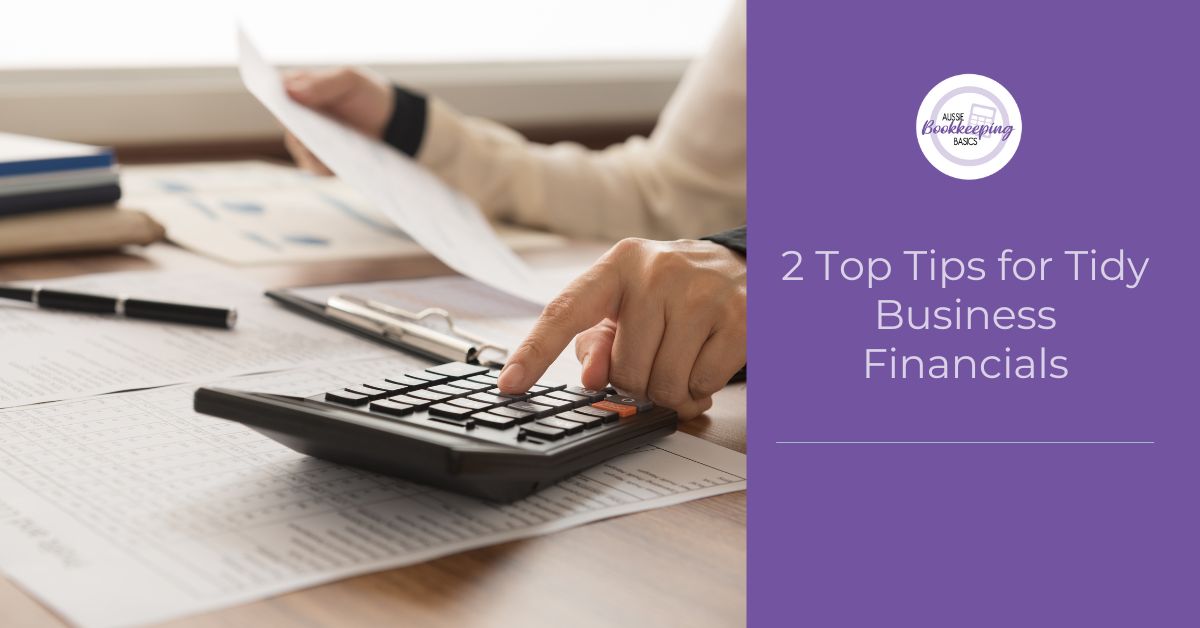In the fast-paced world of Australian small businesses, maintaining tidy financial records is crucial for long-term success.
When someone finds out that I’m a bookkeeper, after the usual comments about it ‘taking all types’, I often get asked some interesting questions!
One of the most common questions I am asked is basically what are the most important things to do, to help get and keep a business’ books in order. (I’ll cover some other common questions in future blog posts)
Today I’m offering you 2 top tips to ensure that your business’ financials get and stay in shipshape order.
Tip #1
My first tip is to keep your business and personal finances separate.
When doing the books yourself (and even when you have engaged with a bookkeeper to do the books), it is MUCH simpler to have your business and personal finances kept separately.
If you haven’t already, open a separate bank account for your business (if you are a sole trader, it doesn’t even have to be a business bank account – just a personal bank account that you ‘set aside’ for the business is fine). All business income should come into that account, and all business expenses (think, stationery, website costs, software subscriptions…) should come out of that account as well.
If you, like many small business owners, discover that you need to use funds from the business bank account for a personal expense, TRANSFER the necessary funds from the business bank account to your personal bank account, and use the funds from there.
When it comes to entering transactions in your accounting software, it is far easier for someone to recognise that transfer to a personal bank account is a personal expense, than to see 6 different transactions, and have to hunt down what these transactions were for, and if they were business expenses.
If you are doing your own bookkeeping, it will save you time and a headache! And if you have a bookkeeper, it will save them time, save you time & energy, and money!
Tip #2
My second tip is to take photos of your business expense receipts and upload them to your accounting system or document storage ASAP.
If you use Xero, then uploading straight to Xero files or Hubdoc is perfect. If you use QuickBooks, then uploading via the mobile app is ideal.
If you don’t have a file upload app for your accounting system, then uploading them to an document cloud storage system like Dropbox, Google Drive or Onedrive, is a great way to keep them all together and make sure that they are easy to find when you need them!
In the dynamic landscape of Australian small business, maintaining tidy financial records is a non-negotiable aspect of long-term success.
By following these two simple tips, you’ll be able to keep your business books tidy, easily!




